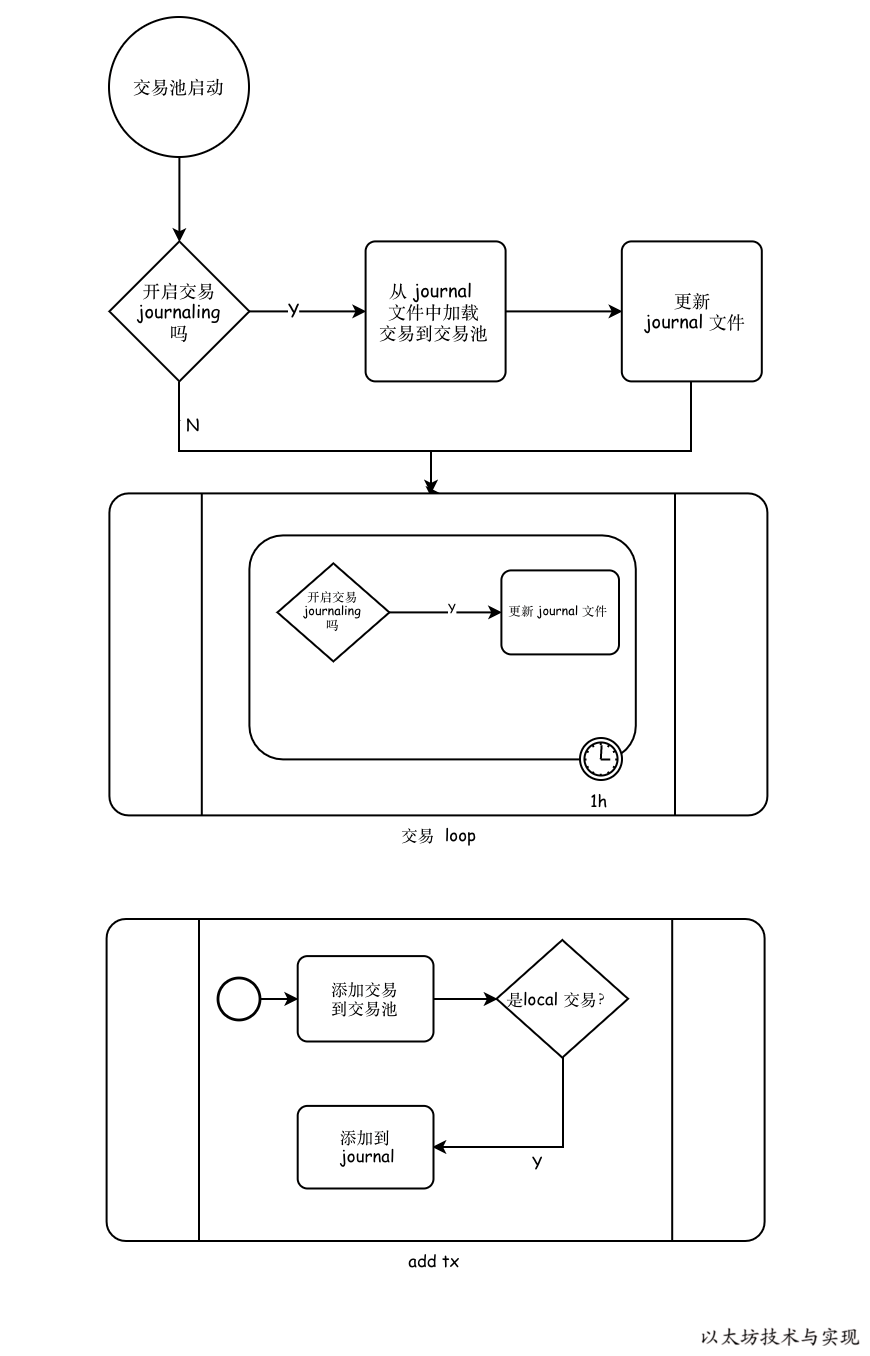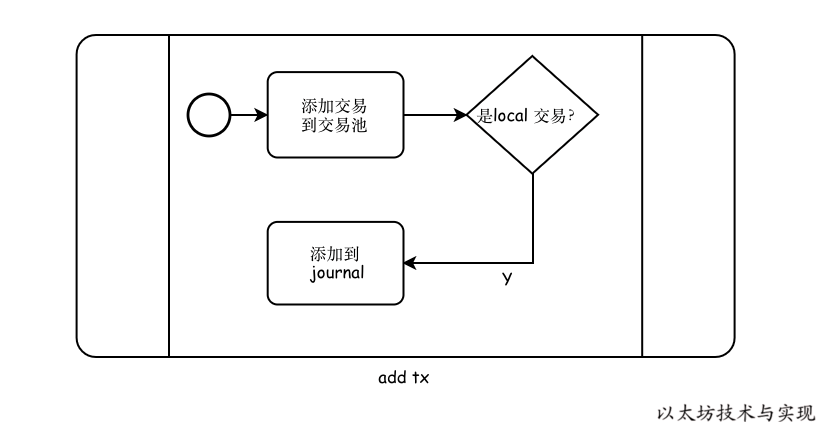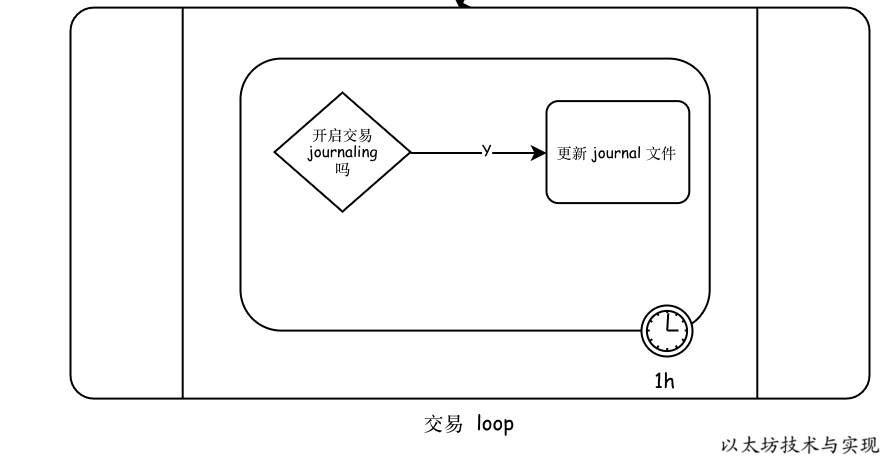当前以太坊公链的平均每秒能处理30到40笔交易,因此以太坊一旦出现火热的DAPP时,极易出现交易拥堵。
偏底的交易处理速度永远无法同现有的中心化服务相比。当网络中出现大量交易排队时,矿工是如何选择并管理这些交易的呢?答案在本篇所介绍的以太坊交易池中,如果你对交易还不特别熟悉,则请先阅读 [以太坊交易]({{< ref "part1/transaction.md" >}})。
交易处理流程
当你通过以太坊钱包,发送一笔转账交易给张三时。这笔交易是如何进入网络,最终被矿工打包到区块中呢?
下图是一笔交易从出生到交易进入区块的关键流程。
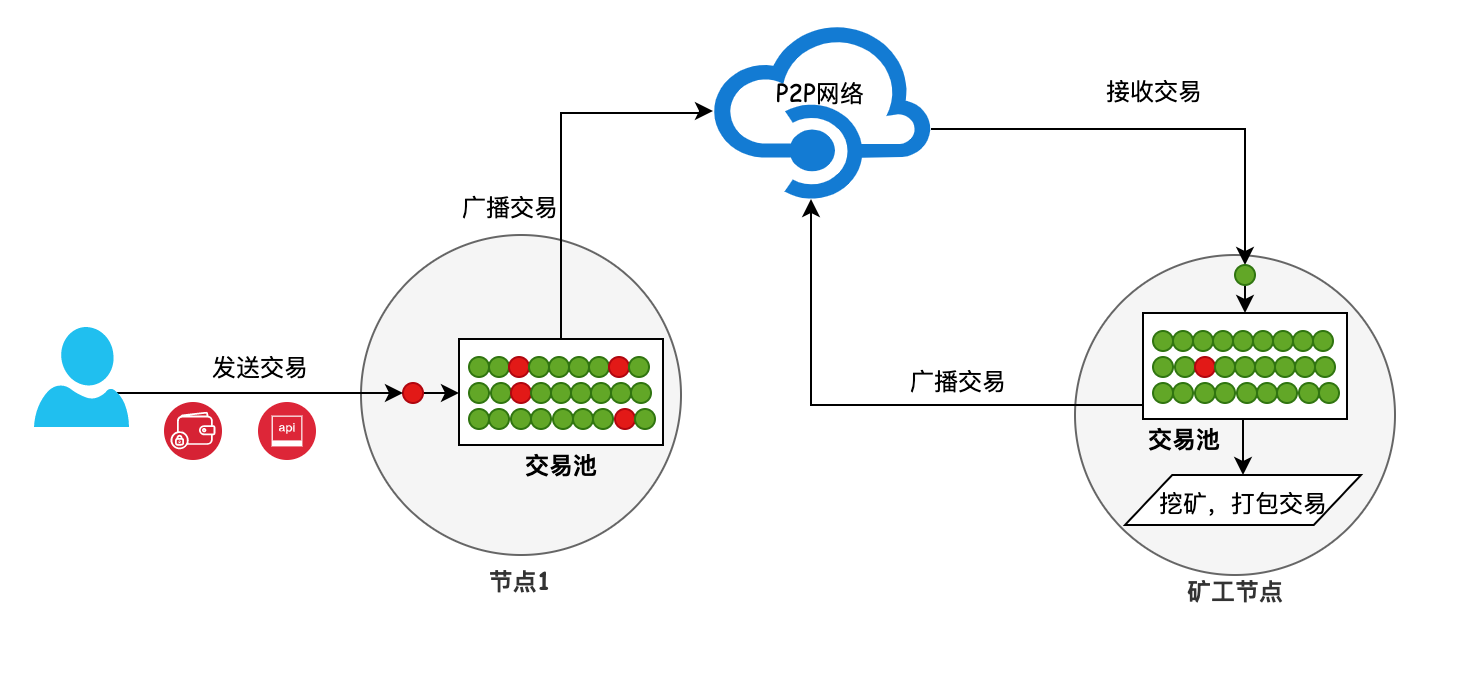
首先,用户可通过以太坊钱包或者其他调用以太坊节点API (eth_sendRawTransaction等)发送交易到一个运行中的以太坊 geth 节点。
此时,因为交易时通过节点的API接收,因此此交易被视为一笔来自本地(local)(图中用红球表示),在经过一系列校验和处理后。交易成功进入交易池,随后向已连接的邻近节点发送此交易。
当邻近节点,如矿工节点从邻近节点接收到此交易时,在进入交易池之前。会将交易标记为来自远方(remote)的交易(图中用绿球表示)。也需要经过校验和处理后,进入矿工节点的交易池,等待矿工打包到区块中。
如果邻近节点,不是矿工,也无妨。因为任何节点会默认将接受到得合法交易及时发送给邻近节点。得益于P2P网络,一笔交易平均在6s内扩散到整个以太坊公链网络的各个节点中。

进入以太坊交易池的交易被区分本地还是远方的目的是因为,节点对待local的交易和remote的交易有所差异。简单地说是 local 交易优先级高于 remote 交易。
以太坊交易池设计
前面并未交易池处理细节,这里将详细讲解以太坊交易池处理一笔交易时的完整过程。在讲解前,你还还有先了解以太坊交易池的设计模型。 从2014年到现在,以太坊的交易池一直在不断优化中,从未停止。从这里也说明,交易池不仅仅重要,还需要高性能。
下图是以太坊交易池的主要设计模块,分别是交易池配置、实时的区块链状态、交易管理容器、本地交易存储和新交易事件。
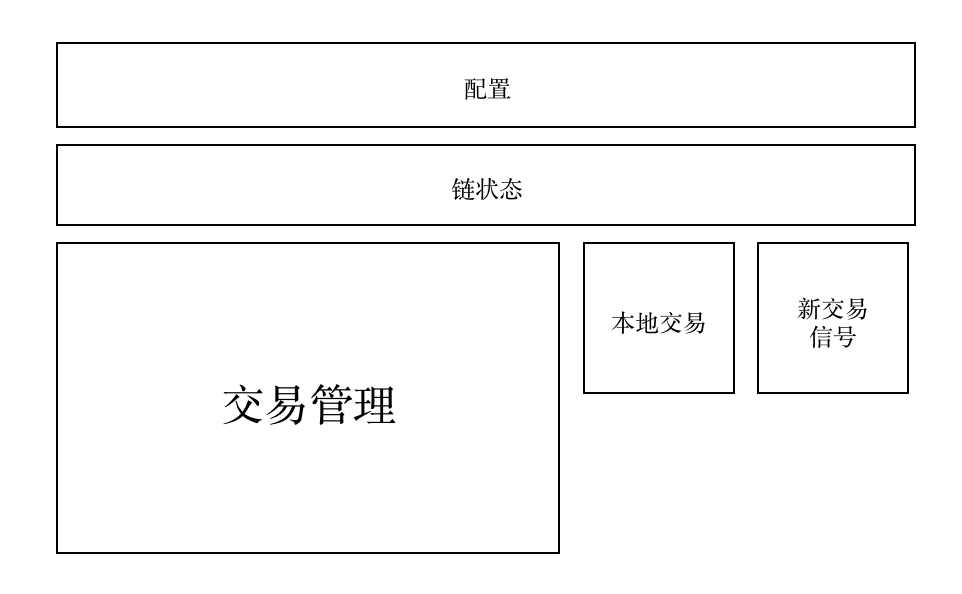
各个模块相互影响,其中最重要的的交易管理。这也是需要我们重点介绍的部分。
交易池配置
交易池配置不多,但每项配置均直接影响交易池对交易的处理行为。配置信息由 TxPoolConfig 所定义,各项信息如下:
// core/tx_pool.go:125
type TxPoolConfig struct {
Locals []common.Address
NoLocals bool
Journal string
Rejournal time.Duration
PriceLimit uint64
PriceBump uint64
AccountSlots uint64
GlobalSlots uint64
AccountQueue uint64
GlobalQueue uint64
Lifetime time.Duration
}- Locals: 定义了一组视为local交易的账户地址。任何来自此清单的交易均被视为 local 交易。
- NoLocals: 是否禁止local交易处理。默认为 fasle,允许 local 交易。如果禁止,则来自 local 的交易均视为 remote 交易处理。
- Journal: 存储local交易记录的文件名,默认是
./transactions.rlp。 - Rejournal:定期将local交易存储文件中的时间间隔。默认为每小时一次。
- PriceLimit: remote交易进入交易池的最低 Price 要求。此设置对 local 交易无效。默认值1。
- PriceBump:替换交易时所要求的价格上调涨幅比例最低要求。任何低于要求的替换交易均被拒绝。
- AccountSlots: 当交易池中可执行交易(是已在等待矿工打包的交易)量超标时,允许每个账户可以保留在交易池最低交易数。默认值是 16 笔。
- GlobalSlots: 交易池中所允许的可执行交易量上限,高于上限时将释放部分交易。默认是 4096 笔交易。
- AccountQueue:交易池中单个账户非可执行交易上限,默认是64笔。
- GlobalQueue: 交易池中所有非可执行交易上限,默认1024 笔。
- Lifetime: 允许 remote 的非可执行交易可在交易池存活的最长时间。交易池每分钟检查一次,一旦发现有超期的remote 账户,则移除该账户下的所有非可执行交易。默认为3小时。
上面配置中,包含两个重要概念可执行交易和非可执行交易。可执行交易是指从交易池中择优选出的一部分交易可以被执行,打包到区块中。非可执行交易则相反,任何刚进入交易池的交易均属于非可执行状态,在某一个时刻才会提升为可执行状态。
一个节点如何自定义上述交易配置呢?以太坊 geth 节点允许在启动节点时,通过参数修改配置。可修改的交易池配置参数如下(通过 geth -h 查看):
TRANSACTION POOL OPTIONS:
--txpool.locals value Comma separated accounts to treat as locals (no flush, priority inclusion)
--txpool.nolocals Disables price exemptions for locally submitted transactions
--txpool.journal value Disk journal for local transaction to survive node restarts (default: "transactions.rlp")
--txpool.rejournal value Time interval to regenerate the local transaction journal (default: 1h0m0s)
--txpool.pricelimit value Minimum gas price limit to enforce for acceptance into the pool (default: 1)
--txpool.pricebump value Price bump percentage to replace an already existing transaction (default: 10)
--txpool.accountslots value Minimum number of executable transaction slots guaranteed per account (default: 16)
--txpool.globalslots value Maximum number of executable transaction slots for all accounts (default: 4096)
--txpool.accountqueue value Maximum number of non-executable transaction slots permitted per account (default: 64)
--txpool.globalqueue value Maximum number of non-executable transaction slots for all accounts (default: 1024)
--txpool.lifetime value Maximum amount of time non-executable transaction are queued (default: 3h0m0s)链状态
所有进入交易池的交易均需要被校验,最基本的是校验账户余额是否足够支付交易执行。或者 交易 nonce 是否合法。在交易池中维护的最新的区块StateDB。当交易池接收到新区块信号时,将立即重置 statedb。
在交易池启动后,将订阅链的区块头事件:
//core/tx_pool.go:274
pool.chainHeadSub = pool.chain.SubscribeChainHeadEvent(pool.chainHeadCh)并开始监听新事件:
//core/tx_pool.go:305
for {
select {
// Handle ChainHeadEvent
case ev := <-pool.chainHeadCh:
if ev.Block != nil {
pool.mu.Lock()
if pool.chainconfig.IsHomestead(ev.Block.Number()) {
pool.homestead = true
}
pool.reset(head.Header(), ev.Block.Header())
head = ev.Block
pool.mu.Unlock()
}
//...
}
}接收到事件后,将执行 func (pool *TxPool) reset(oldHead, newHead *types.Header)方法更新 state和处理交易。核心是将交易池中已经不符合要求的交易删除并更新整理交易,这里不展开描述,有兴趣的话,可以到微信群中交流。
本地交易
在交易池中将交易标记为 local 的有多种用途:
- 在本地磁盘存储已发送的交易。这样,本地交易不会丢失,重启节点时可以重新加载到交易池,实时广播出去。
- 可以作为外部程序和以太坊沟通的一个渠道。外部程序只需要监听文件内容变化,则可以获得交易清单。
- local交易可优先于 remote 交易。对交易量的限制等操作,不影响 local 下的账户和交易。
对应本地交易存储,在启动交易池时根据配置开启本地交易存储能力:
//core/tx_pool.go:264
if !config.NoLocals && config.Journal != "" {
pool.journal = newTxJournal(config.Journal)
if err := pool.journal.load(pool.AddLocals); err != nil {
log.Warn("Failed to load transaction journal", "err", err)
}
//...
}并从磁盘中加载已有交易到交易池。在新的local 交易进入交易池时,将被实时写入 journal 文件。
// core/tx_pool.go:757
func (pool *TxPool) journalTx(from common.Address, tx *types.Transaction) {
if pool.journal == nil || !pool.locals.contains(from) {
return
}
if err := pool.journal.insert(tx); err != nil {
log.Warn("Failed to journal local transaction", "err", err)
}
}从上可看到,只有属于 local 账户的交易才会被记录。你又没有注意到,如果仅仅是这样的话,journal 文件是否会跟随本地交易而无限增长?答案是否定的,虽然无法实时从journal中移除交易。但是支持定期更新journal文件。
journal 并不是保存所有的本地交易以及历史,他仅仅是存储当前交易池中存在的本地交易。因此交易池会定期对 journal 文件执行 rotate,将交易池中的本地交易写入journal文件,并丢弃旧数据。
journal := time.NewTicker(pool.config.Rejournal)
//...
//core/tx_pool.go:353
case <-journal.C:
if pool.journal != nil {
pool.mu.Lock()
if err := pool.journal.rotate(pool.local()); err != nil {
log.Warn("Failed to rotate local tx journal", "err", err)
}
pool.mu.Unlock()
}
}新交易信号
文章开头,有提到进入交易池的交易将被广播到网络中。这是依赖于交易池支持外部订阅新交易事件信号。任何订阅此事件的子模块,在交易池出现新的可执行交易时,均可实时接受到此事件通知,并获得新交易信息。
需要注意的是并非所有进入交易池的交易均被通知外部,而是只有交易从非可执行状态变成可执行状态后才会发送信号。
//core/tx_pool.go:705
go pool.txFeed.Send(NewTxsEvent{types.Transactions{tx}})
//core/tx_pool.go:1022
go pool.txFeed.Send(NewTxsEvent{promoted})在交易池中,有两处地方才会执行发送信号。一是交易时用于替换已经存在的可执行交易时。二是有新的一批交易从非可执行状态提升到可执行状态后。
外部只需要订阅SubscribeNewTxsEvent(ch chan<- NewTxsEvent)新可执行交易事件,则可实时接受交易。在 geth 中网络层将订阅交易事件,以便实时广播。
//eth/handler.go:213
pm.txsCh = make(chan core.NewTxsEvent, txChanSize)
pm.txsSub = pm.txpool.SubscribeNewTxsEvent(pm.txsCh)
//eth/handler.go:781
func (pm *ProtocolManager) txBroadcastLoop() {
for {
select {
case event := <-pm.txsCh:
pm.BroadcastTxs(event.Txs)
//...
}
}另外是矿工实时订阅交易,以便将交易打包到区块中。
//miner/worker.go:207
worker.txsSub = eth.TxPool().SubscribeNewTxsEvent(worker.txsCh)
//miner/worker.go:462
txs := make(map[common.Address]types.Transactions)
for _, tx := range ev.Txs {
acc, _ := types.Sender(w.current.signer, tx)
txs[acc] = append(txs[acc], tx)
}
txset := types.NewTransactionsByPriceAndNonce(w.current.signer, txs)
w.commitTransactions(txset, coinbase, nil)交易管理
最核心的部分则是交易池对交易的管理机制。以太坊将交易按状态分为两部分:可执行交易和非可执行交易。分别记录在pending容器中和 queue 容器中。
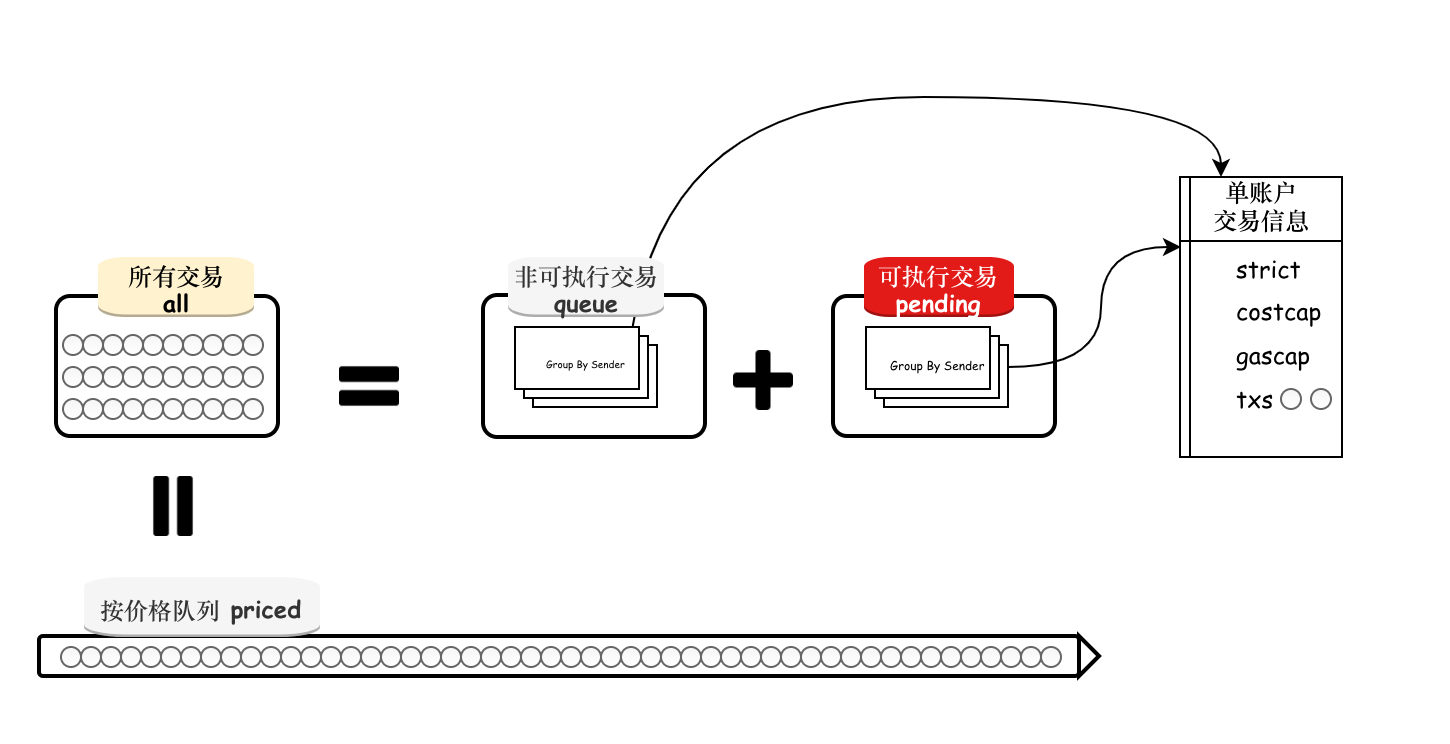
如上图所示,交易池先采用一个 txLookup (内部为map)跟踪所有交易。同时将交易根据本地优先,价格优先原则将交易划分为两部分 queue 和 pending。而这两部交易则按账户分别跟踪。
那么在交易在进入交易池进行管理的细节有是如何的呢?等我下一篇文章详细介绍以太坊交易池交易管理。
转载自:https://learnblockchain.cn/books/geth/part2/txpool/txpool.html
